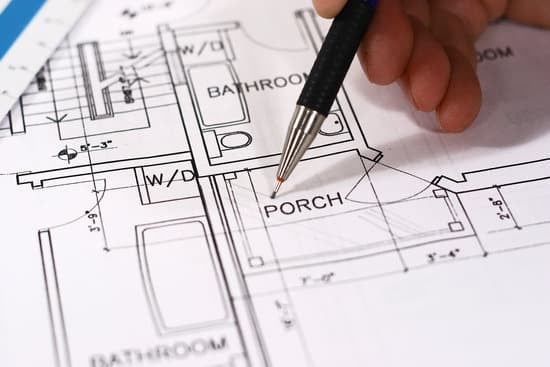Home improvement projects are a fantastic way to enhance your living space and make your house feel more like a home. From simple paint refreshes to full-scale renovations, there are countless ways to personalize and improve your space.
In this article, we will discuss how to approach home improvement projects, set goals, find inspiration, and tackle common tasks with confidence. Whether you’re a seasoned DIY enthusiast or considering hiring professionals, these tips will help guide you through the process.
Creating a vision for your home improvement project is crucial in achieving the desired outcome. By setting clear goals and establishing a budget upfront, you can avoid unexpected expenses and stay on track throughout the project.
Before diving in, take the time to research ideas and gather inspiration from home improvement magazines, websites, and social media platforms. Whether you’re looking to renovate a single room or transform your entire home, exploring different styles and trends can help spark creativity and guide your decisions.
When it comes to tackling home improvement projects, one of the first decisions you’ll need to make is whether to go the DIY route or hire professionals. While DIY projects can be rewarding and cost-effective, some tasks may require specialized skills or tools best left to experts.
We’ll discuss how to assess your capabilities and determine when it’s worth bringing in professionals for optimal results. By following these home improvement tips and guidelines, you’ll be well-equipped to embark on your next project with confidence and achieve the living space of your dreams.
Setting Goals
When embarking on a home improvement project, it is crucial to start by setting clear goals and defining your vision for the end result. Whether you are looking to renovate a specific area of your home or undertake a complete overhaul, having a clear idea of what you want to achieve will guide your decisions throughout the process. Start by identifying the areas in your home that you feel need improvement and prioritize them based on your preferences and budget.
Once you have defined your vision, the next step is to establish a budget for your home improvement project. Setting a realistic budget will help you avoid overspending and ensure that you can complete the project within your financial means.
Consider factors such as the cost of materials, labor (if necessary), permits, and any unexpected expenses that may arise during the course of the project. It is also important to set aside some extra funds as contingency for any unforeseen costs that may come up.
To effectively manage your budget, consider breaking down the overall cost of the project into smaller tasks or phases. This will allow you to allocate funds strategically and monitor your expenses more closely.
Additionally, be sure to research prices for materials and services beforehand to get an accurate idea of how much everything will cost. By outlining your goals and establishing a budget from the outset, you can ensure that your home improvement project stays on track and yields satisfying results in line with your vision.
Research and Inspiration
When embarking on a home improvement project, one of the key elements is gathering inspiration and ideas to guide you through the process. Home improvement magazines are a fantastic resource for exploring various styles, trends, and innovative techniques in the world of home design. Subscribing to a few magazines or browsing through them at your local library can give you valuable insights into what you like and dislike when it comes to home décor and renovation.
In addition to print media, the internet offers a vast array of websites dedicated to home improvement and interior design. Websites like Pinterest, Houzz, and Apartment Therapy showcase countless images of beautifully designed spaces, as well as practical tips and tricks for home improvement projects. These platforms allow you to create virtual mood boards or save images that inspire you, helping you visualize your own project before diving in.
Moreover, social media has become a powerful tool for discovering unique home improvement ideas from real homeowners and design enthusiasts. Platforms like Instagram and Facebook feature countless accounts dedicated to interior design inspiration.
By following these accounts, participating in discussions, and engaging with other users, you can gather valuable insights into the latest trends in home décor. This digital community can provide fresh perspectives on how to approach your own home improvement projects while connecting you with like-minded individuals who share your passion for creating beautiful living spaces.
| Resource | Description |
|---|---|
| Home Improvement Magazines | Great for exploring different styles and trends in home design. |
| Home Improvement Websites | Showcase images of beautifully designed spaces along with practical tips. |
| Social Media Platforms | Powerful tools for discovering unique ideas from real homeowners and design enthusiasts. |
DIY vs Hiring Professionals
Considering DIY Projects
When deciding whether to tackle a home improvement project yourself, there are a few key factors to consider. First, assess your own skills and experience in the specific area of the project. If you have successfully completed similar tasks in the past and feel confident in your abilities, taking on the project yourself can save you money. Additionally, DIY projects can be a great way to personalize your space and add your own creative touch to the design.
Benefits of Hiring Professionals
On the other hand, there are certain projects that are best left to the experts. Hiring professionals not only ensures that the job is done correctly and efficiently but can also save you time and frustration. Professional contractors have the necessary skills, tools, and experience to handle complex projects that may be beyond your capabilities. They can also provide valuable insight and advice on how to achieve the best results for your home improvement goals.
When to Hire a Professional
If a home improvement project involves structural changes, electrical work, or plumbing, it’s highly recommended to hire a licensed professional. These areas require specialized knowledge and expertise to ensure they meet building code regulations and safety standards.
Additionally, large-scale projects that require multiple trades such as remodeling a kitchen or bathroom are often best handled by professionals who can coordinate all aspects of the job seamlessly. Always weigh the pros and cons of DIY versus hiring professionals before embarking on any home improvement project.
Tools and Materials
When embarking on a home improvement project, ensuring you have the necessary tools and materials is crucial for success. Having the right equipment can make the process smoother and more efficient. Whether you are planning to paint a room, install new flooring, or build a deck, having the essential tools at hand is essential.
Basic Tools
Before starting any home improvement project, it is important to have some basic tools in your arsenal. These may include a hammer, screwdriver set, tape measure, level, utility knife, and a cordless drill. These tools will come in handy for a wide range of projects around the house.
Specialized Tools
Depending on the specific project you are undertaking, you may need specialized tools as well. For example, if you are planning to install tile flooring, you will need a tile cutter and trowel. If plumbing work is on your list, pipe wrenches and a tubing cutter may be necessary. It’s important to assess the requirements of your project and acquire any specialized tools needed before getting started.
Materials
In addition to tools, having the right materials on hand is equally important. This may include paint brushes or rollers for painting projects, adhesive or grout for tiling jobs, or lumber and fasteners for building projects. Make sure to calculate how much material you will need based on measurements and add some extra for unforeseen circumstances.
By ensuring you are well-equipped with the necessary tools and materials before beginning your home improvement project, you can set yourself up for success. Remember to always prioritize safety by using protective gear when needed and following proper handling instructions for all tools and materials used in your projects.
Step-by-Step Guide
Undertaking home improvement projects can not only enhance the aesthetics of your living space but also increase the value of your property. Whether you’re looking to freshen up a room with a new coat of paint, update your flooring with tiling, or upgrade fixtures like faucets and lighting, it’s essential to have a clear plan in place.
In this section, we will provide you with detailed instructions on how to tackle common home improvement projects such as painting, tiling, and installing new fixtures.
When starting a painting project, the first step is to prepare the surface by cleaning it thoroughly and repairing any cracks or holes. Next, protect areas you don’t want to paint with painter’s tape and drop cloths. Choose high-quality paint and brushes for a professional-looking finish.
Begin by cutting in around edges with a brush before using a roller for larger surfaces. Apply multiple thin coats for even coverage and allow sufficient drying time between coats for best results.
For tiling projects, start by measuring the area you plan to tile and purchasing the correct amount of tiles, adhesive, grout, and tools such as a tile cutter and spacers. Prepare the surface by ensuring it is clean, dry, and level before applying adhesive and laying down tiles in your desired pattern.
Use spacers to maintain consistent gaps between tiles and apply grout once the adhesive has set. Finish by sealing the grout to prevent staining and water damage for long-lasting results.
When it comes to installing new fixtures like faucets or lighting, always turn off the water or electricity supply before beginning work. Follow manufacturer instructions carefully for installation and make sure you have the necessary tools on hand. Securely attach fixtures following proper techniques to prevent leaks or electrical issues.
Test all connections once installed to ensure everything is functioning correctly before completing the project. By following these step-by-step guides on common home improvement projects, you can achieve professional-looking results while adding value to your home.
Safety Tips
When embarking on a home improvement project, safety should always be a top priority. Whether you are a seasoned DIY enthusiast or a beginner looking to spruce up your living space, it is essential to follow proper safety precautions to avoid accidents and injuries. Here are some important safety tips to keep in mind while working on your home improvement projects:
- Wear appropriate safety gear: Before you begin any project, make sure to wear the necessary protective equipment such as goggles, gloves, closed-toe shoes, and ear protection. This will help prevent injuries from flying debris, sharp tools, or loud noises.
- Use tools properly: Familiarize yourself with the correct usage of all tools required for the project. Always read the manufacturer’s instructions and follow proper techniques to avoid accidents. Keep tools in good condition and store them safely when not in use.
- Work in a well-ventilated area: When using paints, adhesives, or chemicals during your home improvement project, ensure that you are working in a well-ventilated space. Proper ventilation will help reduce harmful fumes and improve air quality.
In addition to these general safety tips, it is crucial to be aware of any specific hazards related to the type of project you are undertaking. For example, if you are planning on installing electrical fixtures or working with wiring, it is advisable to turn off the power supply to avoid electrical shocks. Similarly, if you are renovating an older home, be cautious of potential lead paint or asbestos exposure and take necessary precautions.
Remember that accidents can happen even with the best precautions in place, so always have a first aid kit handy and know what steps to take in case of an emergency. By prioritizing safety throughout your home improvement project, you can create a secure environment for yourself and others involved in the process.
Common Mistakes to Avoid
When embarking on a home improvement project, it’s essential to be well-prepared and informed to ensure a smooth process and successful outcome. Avoiding common mistakes can help you save time, money, and frustration along the way. Here are some tips on what to watch out for to ensure your home improvement project runs smoothly:
- Skipping proper planning: One of the biggest mistakes homeowners make is diving into a home improvement project without a solid plan in place. Take the time to define your goals, establish a budget, and create a timeline for the project. This will help you stay organized and focused throughout the process.
- Underestimating costs: It’s crucial to be realistic about the costs involved in your home improvement project. Make sure to account for materials, labor, permits, and unexpected expenses that may arise. By having a clear understanding of your budget from the start, you can avoid going overboard and running into financial constraints halfway through.
- Not doing enough research: Before starting any home improvement project, it’s important to do thorough research on techniques, materials, and potential challenges you may encounter. Look for inspiration in magazines, websites, or social media platforms to gather ideas and learn from others’ experiences. Educating yourself will not only help you execute the project effectively but also prevent costly mistakes along the way.
Remember that patience is key when it comes to home improvement projects – rushing through tasks can lead to errors that may require additional time and resources to fix. By being proactive in avoiding these common mistakes and staying diligent throughout the process, you’ll be well on your way to achieving your desired results with ease.
Final Touches and Maintenance
When it comes to home improvement projects, the final touches and maintenance are crucial steps that should not be overlooked. After all the hard work of planning, executing, and completing your project, it is essential to add those finishing touches that will truly elevate the look and feel of your living space.
Whether it’s adding decorative elements, organizing your newly renovated space, or simply ensuring everything is in place, these final touches can make a significant difference in the overall outcome of your project.
One of the key aspects of maintaining your home improvements for the long-term is staying proactive with regular upkeep and maintenance. This includes tasks such as cleaning, repairing any wear and tear, updating as needed, and ensuring that everything remains in good condition.
By staying on top of these maintenance tasks, you can prolong the longevity of your home improvements and prevent any costly repairs down the line. It’s all about consistency and taking care of your investment to ensure it continues to look its best for years to come.
In conclusion, incorporating the final touches and establishing a routine maintenance schedule are essential components of any successful home improvement project. By focusing on these aspects, you can truly complete your vision for your living space and ensure that all your hard work pays off in the long run. Remember to enjoy the process, stay organized with your tools and materials, and most importantly, take pride in transforming your home into a haven that reflects your style and personality.
Frequently Asked Questions
What Should You Do First in Home Improvements?
When starting on home improvements, the first thing you should do is assess the needs of your space. Take note of any repairs or upgrades that are urgent, as well as any cosmetic changes you would like to make. This initial evaluation will help guide your renovation process and ensure that you prioritize tasks effectively.
What Is the 30 Renovation Rule?
The 30 Renovation Rule suggests that homeowners should aim to spend no more than 30% of their home’s value on renovations to avoid over-improving for the neighborhood. By sticking to this guideline, you can potentially increase your property’s resale value without overspending on improvements that may not add much value relative to your home’s overall worth.
How Do I Get Started in Home Improvement?
Getting started in home improvement involves planning, research, and setting a budget. Begin by identifying what areas of your home need attention and create a detailed plan for each project. Research materials, contractors, and permits if necessary. Finally, establish a realistic budget that aligns with your goals and financial means before diving into renovations.

I’m thrilled to have you here as a part of the Remodeling Top community. This is where my journey as an architect and remodeling enthusiast intersects with your passion for transforming houses into dream homes.





